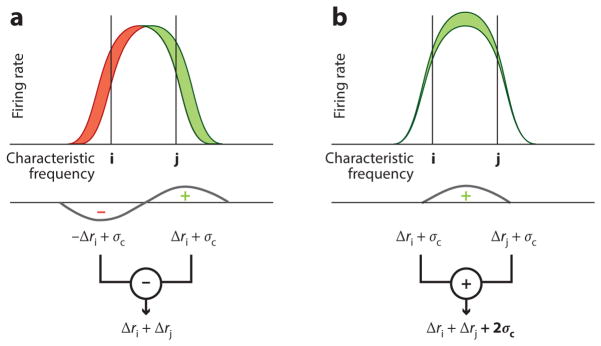Figure 1.
(a) Schematic of response (excitation pattern) for two tones close together in frequency. An increase in frequency leads to a shift in the peak of the response to the right, which, in turn, leads to a response decrease below the peak (ri) and a response increase above the peak (rj). If some of the neuronal noise is correlated, then the correlated portion of the noise (σc) will be canceled out when the two responses are compared by subtraction, leading to improved discrimination. (b) For intensity discrimination, correlated neuronal noise between i and j has a different effect because the increment in intensity is detected by adding (not subtracting) the neuronal responses, leading to an increased effect of the correlated noise and, thus, poorer discrimination. Overall, smaller differences in response (or excitation) patterns are required for the detection of a change in frequency than a change in intensity, in line with human perceptual data (Micheyl et al. 2013b).

